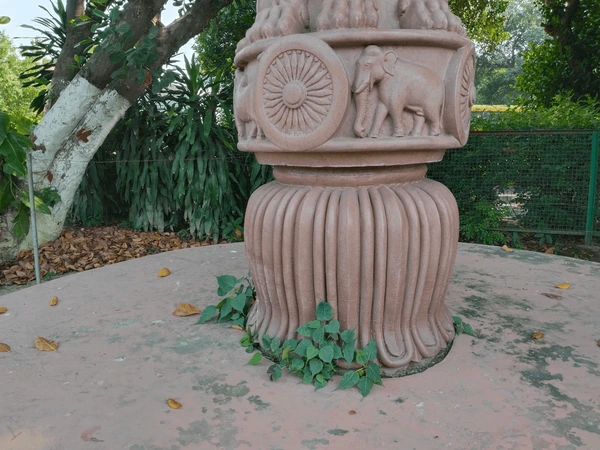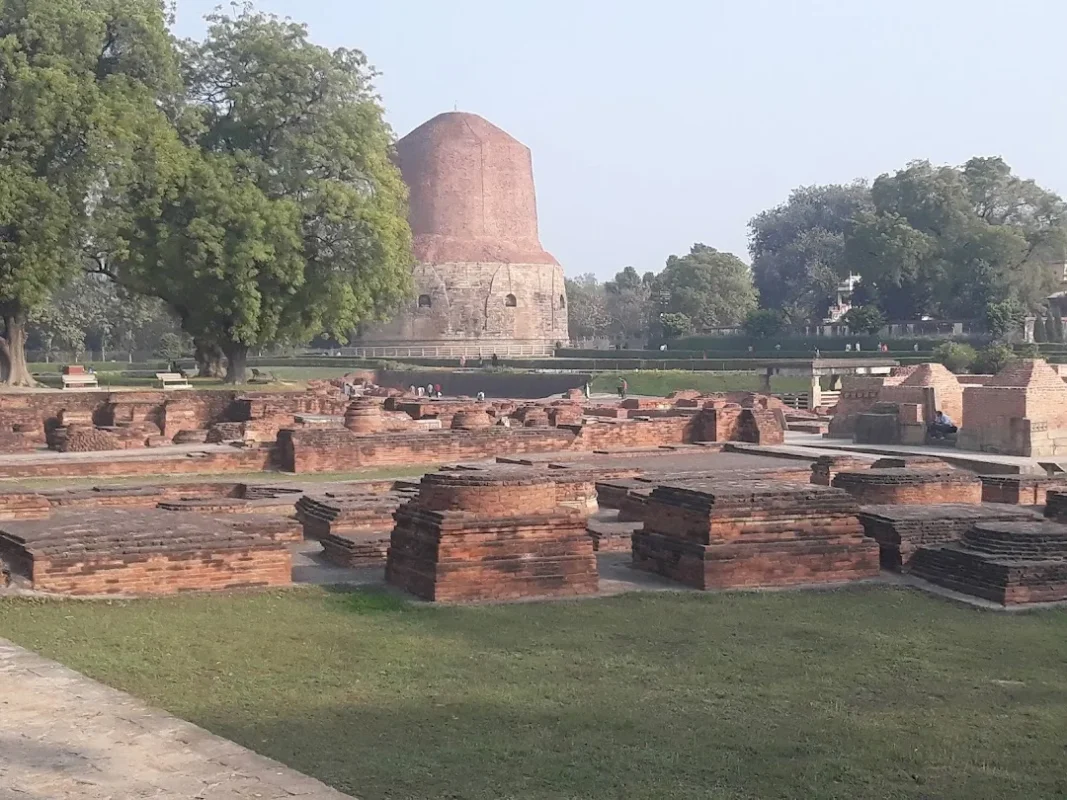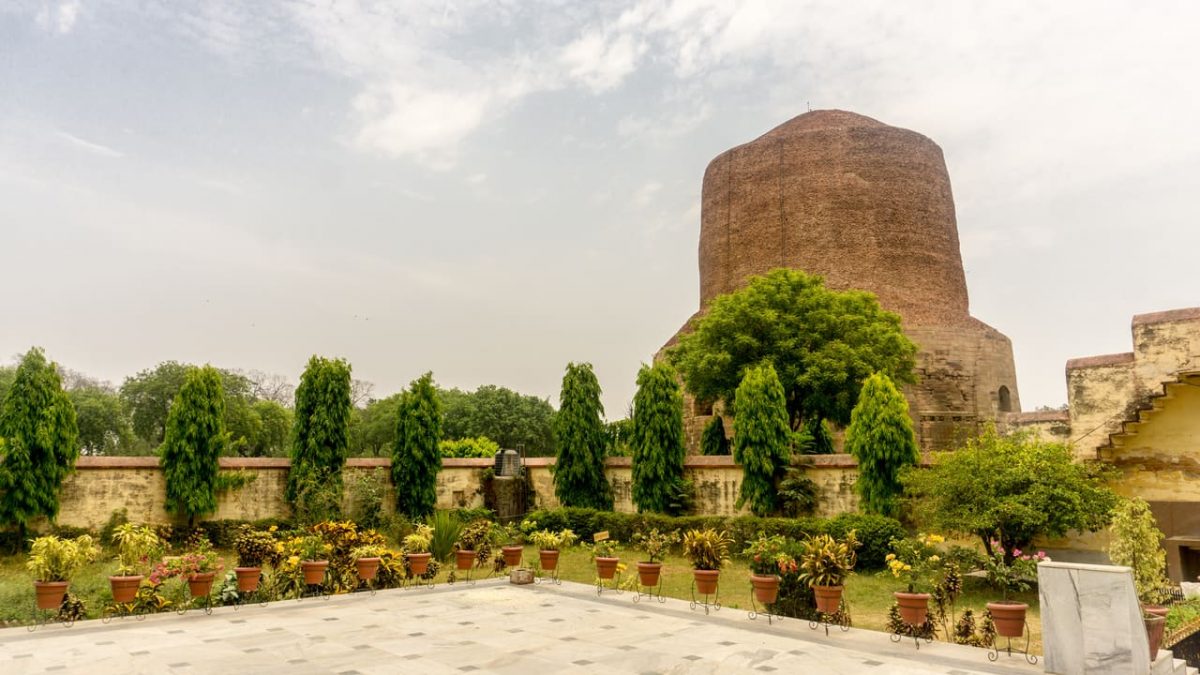Explore the ancient echoes of Emperor Ashoka’s edicts in Varanasi with the iconic Ashoka Pillars. Unravel the rich historical tapestry and architectural marvels that bear witness to a transformative era. Plan your visit to Varanasi to witness the silent eloquence of these pillars and delve into India’s cultural and spiritual heritage.
Historical Roots:

The Ashoka Pillars in Varanasi are part of a larger network of pillars erected by Emperor Ashoka during the 3rd century BCE. Ashoka, the illustrious Mauryan ruler, is renowned for his conversion to Buddhism and his commitment to spreading the teachings of the Buddha. The pillars, inscribed with edicts and principles, were strategically placed across the Indian subcontinent to disseminate Ashoka’s messages of morality, non-violence, and religious tolerance.
Ashoka’s connection to Varanasi is deeply rooted in history. It is believed that he had a profound reverence for the city’s spiritual significance, and his inscriptions in Varanasi reflect his dedication to fostering a just and compassionate society.
Also read: Manikarnika Ghat
Architectural Marvel:

The Ashoka Pillars are characterized by their distinctive architectural style, marked by a polished surface and a capital featuring a set of four lions standing back to back. The lion capital, now iconic and emblematic of India, is crowned by the Wheel of Dharma, representing the Buddhist concept of the Noble Eightfold Path.
Varanasi boasts two notable Ashoka Pillars. The first, situated at Sarnath, is particularly famous as the place where Buddha delivered his first sermon after attaining enlightenment. The second Ashoka Pillar is located near the archaeological site of Sarnath, providing a glimpse into the emperor’s enduring legacy.
Also read: Chandra Prabhu Bhagwan
Sarnath Pillar:
The Ashoka Pillar at Sarnath, often referred to as the Sarnath Lion Capital, is a magnificent example of Mauryan artistry. Crafted from a single piece of polished sandstone, the pillar stands tall, bearing the weight of history on its sturdy shoulders. The exquisite lion capital atop the pillar is adorned with intricately carved figures and symbols, showcasing the skill and finesse of Mauryan sculptors.
The lions, standing on an abacus, symbolize power and strength, while the Wheel of Dharma beneath them signifies the principles of Buddhism. The inscriptions on the pillar, written in Brahmi script, convey Ashoka’s edicts and teachings, emphasizing the importance of righteous conduct and compassion.
Varanasi Pillar:

The second Ashoka Pillar in Varanasi is located near the archaeological site of Sarnath and is distinct in its design compared to the Sarnath Pillar. This pillar, made of red sandstone, stands as a testament to the architectural diversity within Ashoka’s reign. Although the lion capital is absent, the pillar is marked with inscriptions and engravings that offer insights into Ashoka’s vision for a morally upright society.
Cultural and Religious Significance:

The Ashoka Pillars in Varanasi hold profound cultural and religious significance. They serve as tangible reminders of Emperor Ashoka’s commitment to the principles of Buddhism and his efforts to propagate a moral and ethical way of life. Varanasi, with its spiritual resonance, became a conduit for Ashoka’s message, influencing the spiritual landscape of the city.
The inscriptions on the pillars emphasize tolerance and respect for all religious traditions. Ashoka’s advocacy for religious pluralism and his commitment to social welfare resonate with the spiritual ethos of Varanasi, a city that has been a melting pot of diverse religious and philosophical traditions.
Preservation Efforts:
Over the centuries, the Ashoka Pillars have faced the ravages of time, weathering natural elements and human activities. Recognizing their historical and cultural significance, various conservation initiatives have been undertaken to preserve these architectural marvels.
Conservation efforts include measures to protect the pillars from environmental degradation, vandalism, and encroachment. These initiatives aim to ensure that future generations can continue to marvel at the legacy of Ashoka and appreciate the historical and cultural richness encapsulated in the pillars.
Tourist Attraction:

The Ashoka Pillars in Varanasi have become significant tourist attractions, drawing history enthusiasts, scholars, and spiritual seekers alike. Visitors to Sarnath and the archaeological site near Varanasi are captivated by the aura of these ancient structures, marveling at the craftsmanship and historical importance they represent.
Guided tours provide insights into the edicts and inscriptions, unraveling the layers of Ashoka’s philosophy and the broader context of ancient Indian history. The pillars, with their silent eloquence, narrate stories of an emperor’s transformation and his unwavering commitment to principles that transcended the boundaries of time.
Educational and Research Value:
The Ashoka Pillars in Varanasi contribute significantly to academic research and the study of ancient Indian history. Scholars and archaeologists delve into the inscriptions, deciphering the language and context to gain a deeper understanding of Ashoka’s reign, his religious inclinations, and the socio-political milieu of the Mauryan Empire.
The pillars serve as invaluable artifacts that bridge the gap between historical narratives and contemporary understanding. They provide a tangible link to a pivotal period in India’s past, fostering scholarly pursuits and contributing to a more comprehensive comprehension of the nation’s cultural and philosophical evolution.
Conclusion:
The Ashoka Pillars in Varanasi, with their majestic presence and historical import, stand as silent witnesses to a bygone era. Their enduring legacy speaks of an emperor’s transformative journey and his commitment to fostering a society grounded in morality and compassion. As these pillars continue to grace the spiritual landscape of Varanasi, they invite all those who encounter them to reflect on the profound principles they represent—a timeless testament to the convergence of history, art, and spirituality.



Comment (0)